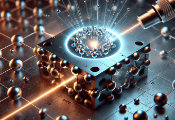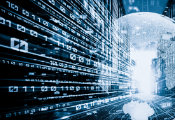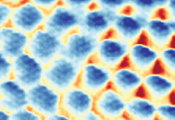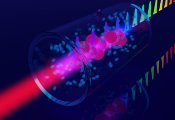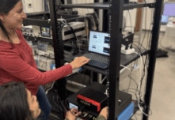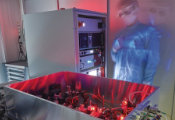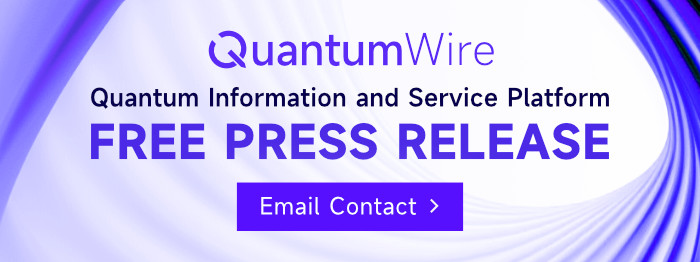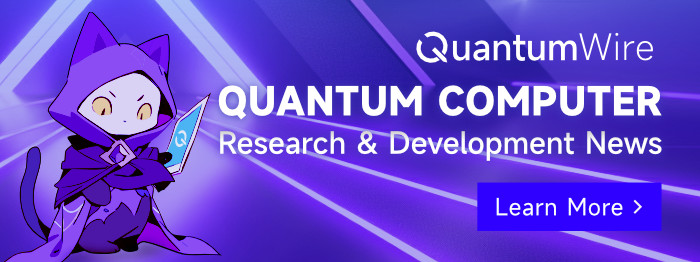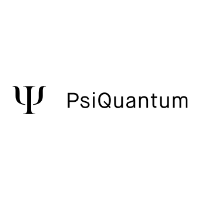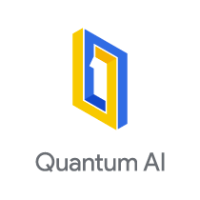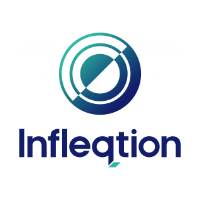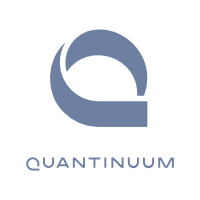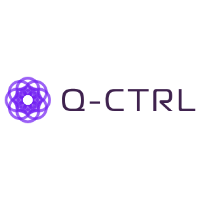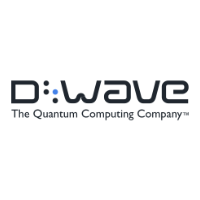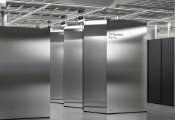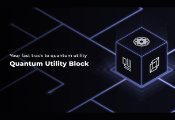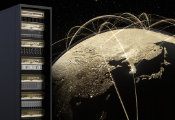Sandia Team Uses Machine Learning to Model and Predict Quantum Computing Errors
November 14, 2025 -- Much is still unknown about how quantum computers behave and what they might one day help humans achieve. But one Sandia team is using machine learning to better understand how to use quantum systems more efficiently — and it all comes down to understanding a simple jukebox.
It started with an effort by quantum computing scientists Daniel Hothem, Timothy Proctor and their team to help researchers and others select the right quantum computing solutions.
“We’re building models that allow scientists to really understand a quantum computer so they can either make it better or understand what problems it can solve,” Daniel said.
The Problems with Programs
Quantum computers have the potential to tackle complex problems faster and more accurately than the world’s best supercomputers. They do so by using physical phenomena, such as laser beams, to manipulate quantum bits of information, like how conventional computers use electricity to manipulate zeros and ones.
But there is a major gap between what a “perfect” quantum computer is theoretically capable of and the performance of current systems. That’s because real-world devices experience physical errors that corrupt calculations. Closing that gap is essential if quantum computers are to deliver on their promise.
The main problem: contemporary quantum computers fail — a lot. Timothy likened it to trying to write a document in Word with the program crashing often and unpredictably.
“Imagine typing into a document and Word just crashes,” he said. “It quits a lot of the time, and you couldn’t predict when that was going to happen. Or maybe the program types a different word than the one you typed, and the only way you’d know is by trying it.”
According to Timothy, “physical errors are predominantly why quantum computers fail.” Unfortunately, you can’t open a quantum computer mid-calculation to see what went wrong. That makes it difficult and expensive to improve the systems, and it raises the stakes for making the right decisions about which programs to run or which research paths to pursue.
A tool that could predict when and why a quantum computer fails by identifying what physical errors are likely to occur could help researchers avoid those mistakes and accelerate development across the DOE enterprise. Daniel and Timothy believe they’re building that tool.
Facing the Music: Tuning the Jukebox
So how can a tool predict quantum behavior when the systems themselves are so hard to understand?
According to the team, with the right model, it’s possible to learn from the failures and successes of quantum programs running on a device. Daniel explained the concept using a familiar diner relic.
“Imagine you’re looking at an old jukebox,” he said. “You want to play a record, but you’re worried it won’t work — after all, it is old. The records may be scratched, the coin feed could be busted or there might be a faulty wire. Before you spend a quarter, you’d like to know if your record will play the way you want it to. Since you don’t own the jukebox, you can’t just open it up to examine its parts.”
One solution: build a digital model of the jukebox using its blueprint. After creating digital versions of the records — say, by taking photos — you could use your model to predict whether a record will play correctly. To make your model accurate, you’d test just a few records on the real jukebox and use the results to refine your model until its predictions matched the real-world outcomes.
In the same way, researchers can build good models of how physical errors in a quantum computer spread and distort the final output.
“People, including scientists at Sandia, have done a lot of work classifying and understanding the impact of different errors inside quantum computers,” Daniel said. “If you can identify the specific physical errors in a device and how bad they are, it’s straightforward to predict their effect on a quantum computation. The hard part is identifying the right errors in the first place.”
The team turned to neural networks for help. In their models, a neural network processes a digital snapshot of a quantum program and predicts which physical errors will occur when it runs on a quantum computer. Those errors are then translated into a mathematical formula that predicts how often the program will succeed.
By training the models on data from successful and failed programs, the team doesn’t have to rely heavily on quantum computers. The models learn by proxy.
Returning to the jukebox analogy, the team trains their models by showing them photos of records — programs run by quantum computers — along with their success or failure rates. The models learn to infer information about likely errors from the “photos.” They begin to spot important “scratches,” judge the quality of the coin feed and assess the state of the wires.
“We tell the models how different errors affect success probabilities — how often a quantum program works,” Daniel said. “We also tell them to only focus on the errors we think are most important. This makes our models hyper efficient. By not modeling unimportant errors, our models are way less complicated than the jukebox but remain hyper accurate.”
Trying to Future-Proof Quantum Computing
That hyper-efficiency is important. As quantum computers become more complex, traditional error-analysis methods must scale with them — but Sandia’s models don’t.
“Building our models doesn’t get that much harder as devices get bigger,” Daniel said. “All our other approaches for understanding mistakes inside a quantum computer become impossible to use, or require very limiting assumptions, as systems grow more complex. We’re building a technique that will scale with quantum computers.”
The team’s approach scales more slowly than the computers themselves, making the models easier for programmers and users to work with.
Input and Output
That manageable growth in complexity means the models Daniel and Timothy are building could benefit almost everyone in the quantum computing ecosystem.
“Since our models learn about the errors inside the system, programmers can use them to quickly understand what’s wrong,” Daniel said. “In the real world, our actual models will help engineers and scientists improve their devices.”
They could also help researchers outside of computing understand which problems existing quantum systems can realistically solve. For instance, a chemist might use the models to determine whether a quantum computer can successfully run simulations of chemical systems.
As the Sandia team continues refining their models, the potential benefits for quantum computing are significant. By better modeling real-world errors, the team hopes to reduce the time and cost of developing the next generation of quantum systems.
“One of our goals is to help scientists cut down on non-fruitful research directions,” Daniel said, emphasizing how their work could streamline research and accelerate the ways scientists can use quantum computers to tackle the world’s toughest national security challenges.

